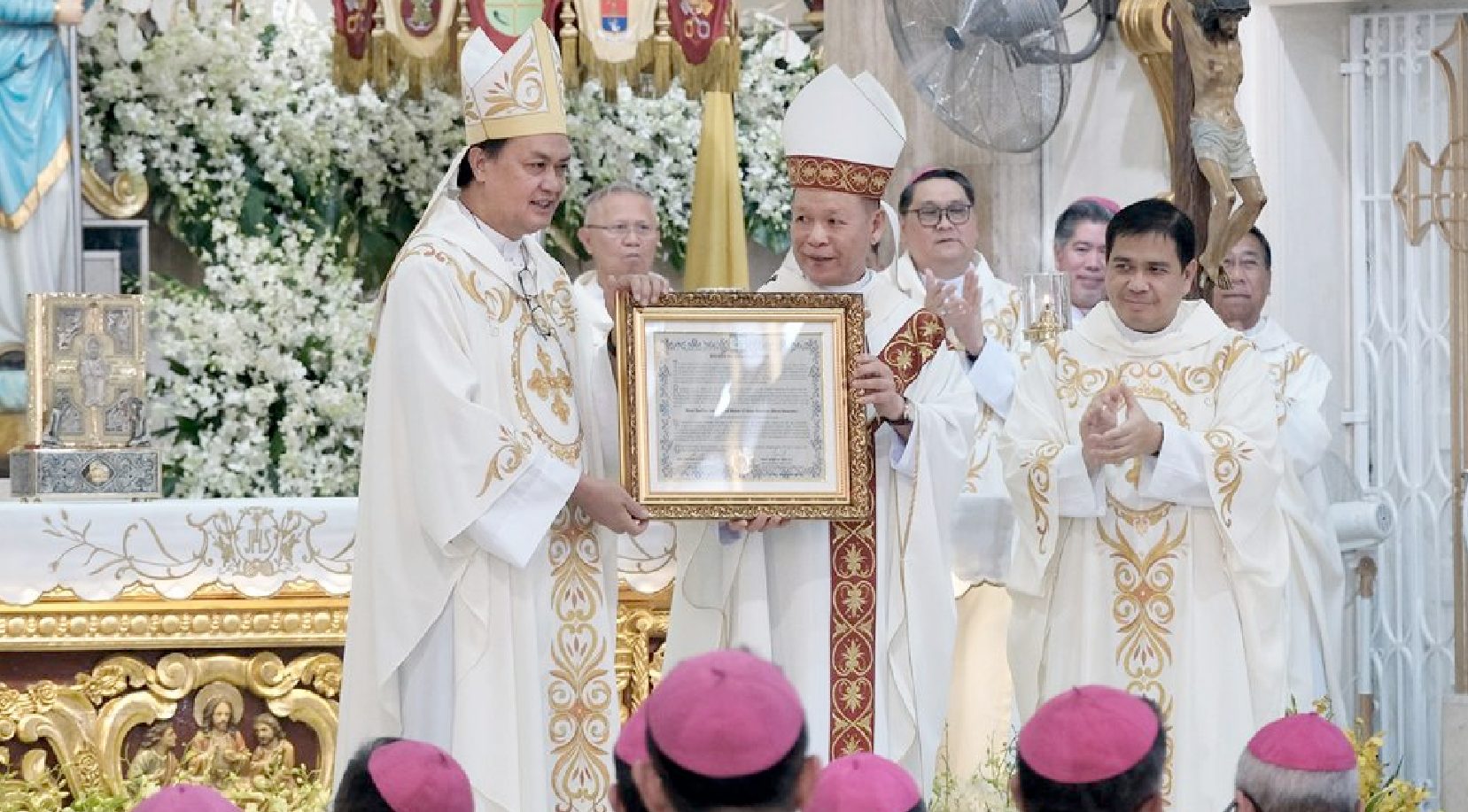(ZENIT – Asia News / Antipolo, 01.29.2024).- The Catholic Church in the Philippines experienced a historic day on January 26 with the solemn liturgy proclaiming the Cathedral of Antipolo as an international sanctuary. The temple houses an ancient statue of the Virgin brought from Mexico in the 17th century and is venerated with the title of Our Lady of Peace and Good Voyage. For this reason, it is dearly loved by Filipino immigrants worldwide.
With the recognition granted by the Vatican, accepting a request from the Catholic Bishops’ Conference of the Philippines in 2021, the Cathedral of Antipolo has become the first international sanctuary in the Philippines and the entire Southeast Asia. Currently, there are only three international sanctuaries in Asia, and the Filipino one is the only one linked to Marian devotion; the other two are the Church of St. Thomas in Kerala and the Martyrs’ Church in Haemi, South Korea.
The proclamation of the title of an international sanctuary took place on January 26 during a solemn Eucharistic celebration presided over by the Apostolic Nuncio, Archbishop Charles John Brown, along with the Bishop of Antipolo, Bishop Ruperto Santos, and 80 other bishops from across the country. Among the numerous faithful present was also the First Lady of the Philippines, Louise Araneta-Marcos.
In his homily, the Nuncio highlighted the importance of this event as a testimony to the «international character of the Filipino Catholic Church,» emphasizing the immigrants’ devotion to the Virgin of Antipolo, whom they pray to for safety in their travels. He said, «You are bearers of a gift to the world, and Our Lady here in Antipolo is truly the mother of that gift because that gift is Jesus,» linking the Filipino diaspora with evangelization.
«We ask the Lord and hope to be a blessing to all, to be his channels of grace and instruments of God’s goodness to others,» said Bishop Santos. «This will be our mandate and mission from now on, so that this may be a sanctuary of conversion, compassion, and charity,» he added, urging the sanctuary to be especially alongside «the most vulnerable and those without a voice.»
The temple was built in 1632 as a sanctuary for the Virgin of Antipolo, an image brought by Governor General Juan Niño de Tabora from Acapulco, Mexico. Despite damage caused by repeated earthquakes, the sanctuary became a place of pilgrimage during the Spanish colonial period. Even the young José Rizal, the national hero of the Philippines, recalled in his diaries that he had gone there as a pilgrim with his father in 1868.
The title of Our Lady of Peace attributed to the sanctuary is related to the painful events during World War II when Japanese occupation forces transformed it into an arsenal in 1944. Sacristan Procopio Ángeles saved the image of the Virgin by hiding it in an empty gasoline drum buried underground. From there, it was taken to the Quiapo Church in Manila, thus escaping US bombings. Rebuilt after the war, the church was proclaimed a national sanctuary in 1954 and later became a cathedral when the Antipolo diocese was created in 1983.



